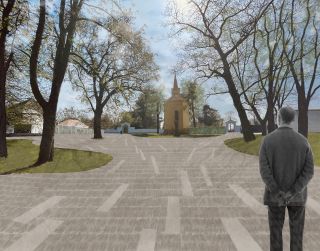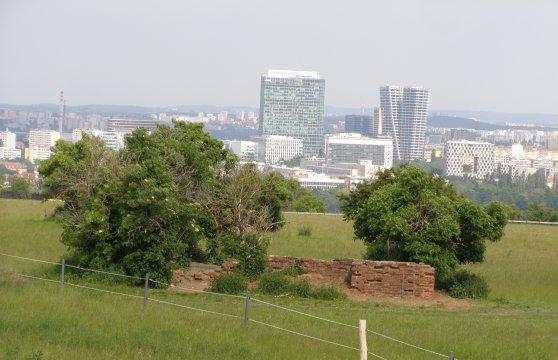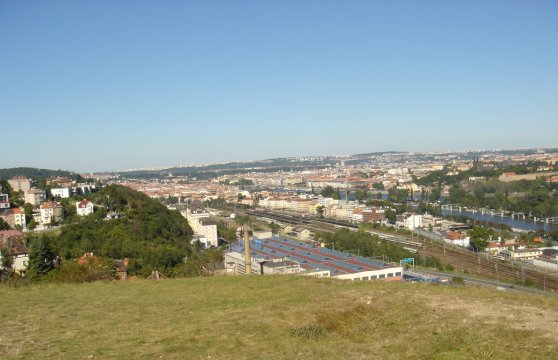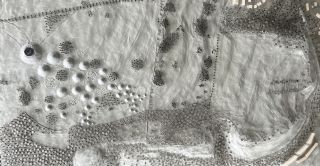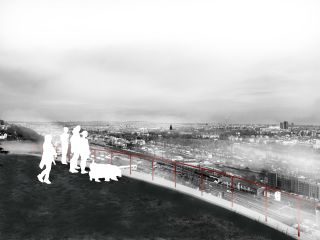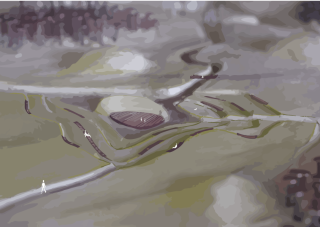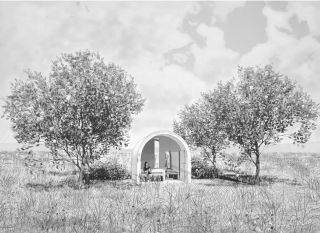- DÍVČÍ HRADY - open air sculpture gallery
SS 2025
Assignment
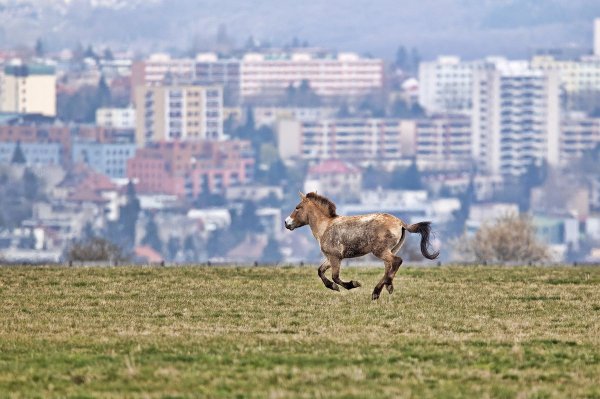
Why this project?
Even for the untrained eye is a schizophrenia of the Prague’s horizon obvious. On one side one of the incredibly enchanting images of the historical Prague, at the other side a horizon scarred with monstrous billboards and a plethora of recently constructed eyesores. Yet Prague is a quite porous city with a cornucopia of places that could be enhanced by artistic interventions. Whilst Prague embarked with a gusto on a project of the new philharmonic, we believe that there is one element missing in a rich mosaic of possibilities for encounters with the modern art that is an outdoor sculpture garden and a gallery.
A place chosen for this project is a large, formerly agrarian land, now a meadow at an elevated platform at the edge of the river Vltava. Known as Divci Hrady it is perched just above the railway station Smichov. From the edge of the hill a wide panorama of the city, unravel in front of your eyes.
What do we expect?
Ideally, the project would be a collaboration between students of architecture and landscape architecture. As studio leaders, we can fill a potential knowledge gap. Students of landscape architecture can nominate a suitable location and suggest only the approximate building volume, and building’s integration in the surrounding landscape.
The gallery will be located well away from the protected area. Transitional zone between a proposed gallery and protected area ought to be carefully designed. The gallery will be predominantly underground with a roof to be also suitable for art installations. The building will have usual amenities, cafe with approx. 50 seats, a possibility for some outdoor seating, offices and workshops. Servicing can occur via an underground tunnel. Ramps must be integrated in the landscape. The entire building would be in a category of a topographical architecture. A possible reference is Ch Chu Contemporary Art Center Naoshima v Tokyu or, domestically Archeopark Pavlov in South Moravia. There will be also an amphiteatre, rather an earthsculpture than an overtly structured place, a place for public gatherings.
Surrounding landscape is not going to be of the manicured type but a signifier of process involved in transformation of the landscape. The challenge here is to find an artistic expression for Eco revelatory design. The design therefore need not be petrified but also could involve gradual demise.





